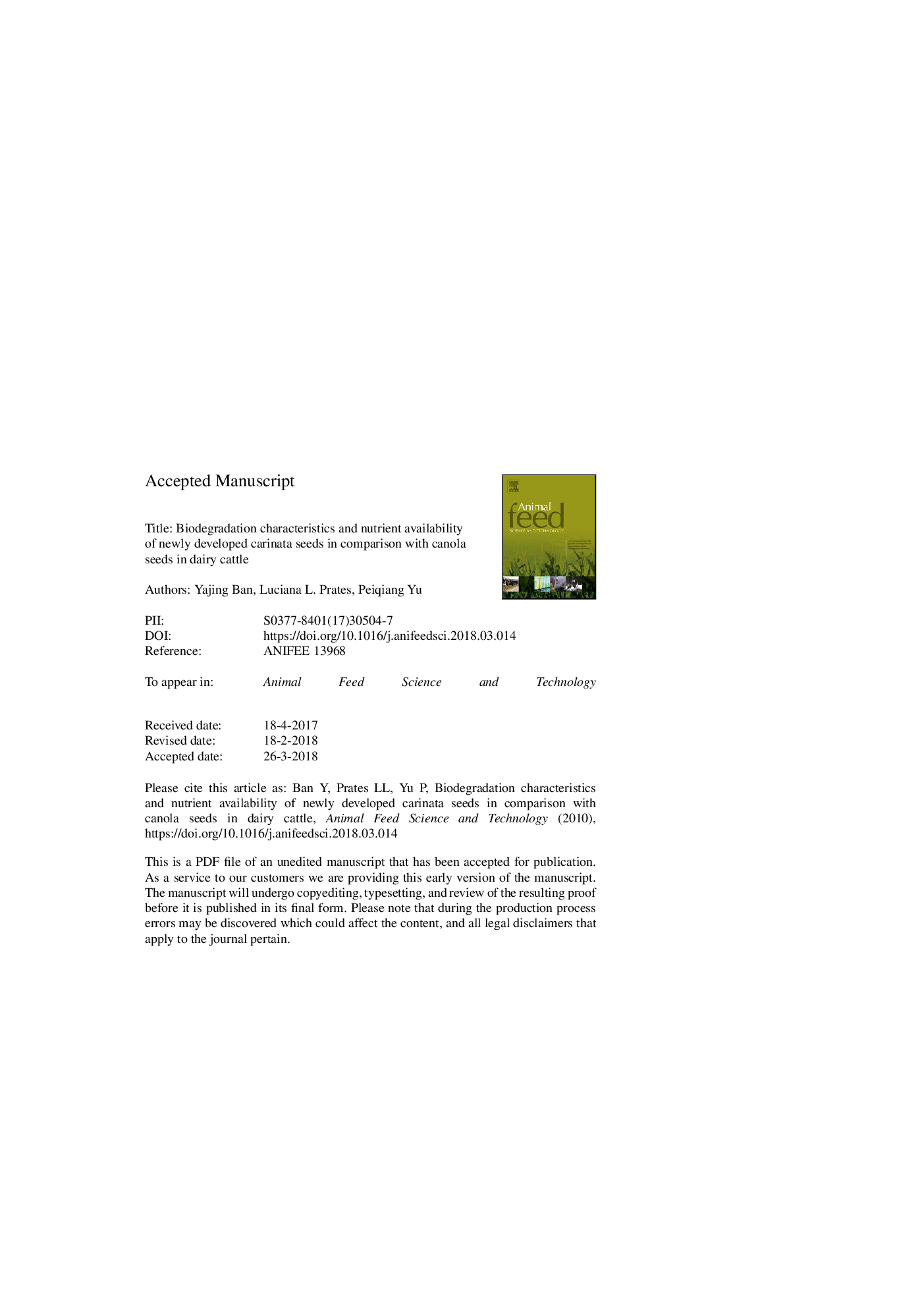| Article ID | Journal | Published Year | Pages | File Type |
|---|---|---|---|---|
| 8490954 | Animal Feed Science and Technology | 2018 | 50 Pages |
Abstract
This study aimed to investigate physiochemical and nutritional characteristics of newly developed yellow and brown carinata seeds in comparison with newly developed yellow and brown canola seeds provided by Agriculture and Agri-Food Canada (Saskatchewan, Canada), and commercial canola seeds (COMM) accounting 4 new lines and 1 commercial line. Each line obtained from two different sources was used to determine dry matter (DM), crude protein (CP), ether extract (EE), NDF, ADF and non-fibre carbohydrate (NFC). The CNCPS was used to predict rumen degraded and undegraded organic matter (OM), CP and NDF, the in situ degradation and intestinal digestibility of the nutrients were determined in order to establish the nutritional values of carinata and canola seeds for dairy cattle. The results showed that CP and NPN contents were greater (Pâ¯<â¯0.05), while EE, NDF, ADF and ADL were lower (Pâ¯<â¯0.05) for carinata than canola seeds. Total glucosinolates were greater (Pâ¯<â¯0.01) in carinata than canola seeds. The digestible energy at a production level (DEp3x) and metabolizable energy at a production level (MEp3x) were lower (Pâ¯<â¯0.05) for carinata than canola seeds. Carinata showed greatest rumen undegraded protein (RUP) and effective degradability (ED) of OM and CP. Considering seed coat color, yellow carinata seed had higher EDCP (232â¯g/kg DM) than brown carinata (191â¯g/kg DM). Higher truly absorbed rumen-synthesised microbial protein in small intestine (AMCP) was obtained for carinata seeds, while truly absorbed rumen-undegraded feed protein in small intestine (ARUP) was similar between carinata and canola seeds, but lower for commercial canola. Metabolizable protein (MP) was greater for carinata (137â¯g/kg DM) than canola (125â¯g/kg DM) and commercial (116â¯g/kg DM) regardless seed coat color. Carinata seeds showed higher feed milk value (FMV) (2.8â¯kg milk/kg feed) than canola (new and commercial) seeds. There was no effect of seed coat color (Pâ¯>â¯0.05) on ARUP, MP and FMV, but yellow seed showed greater EE content than brown seeds (Pâ¯=â¯0.20). In conclusion, newly developed carinata seeds showed higher CP and glucosinolates, but lower EE and fibre contents comparing to canola (new and commercial) seeds. Carinata seeds could be considered as a ruminant feed due to higher CP, energy, digested protein supply, AMCP, MP and FMV.
Related Topics
Life Sciences
Agricultural and Biological Sciences
Animal Science and Zoology
Authors
Yajing Ban, Luciana L. Prates, Peiqiang Yu,
